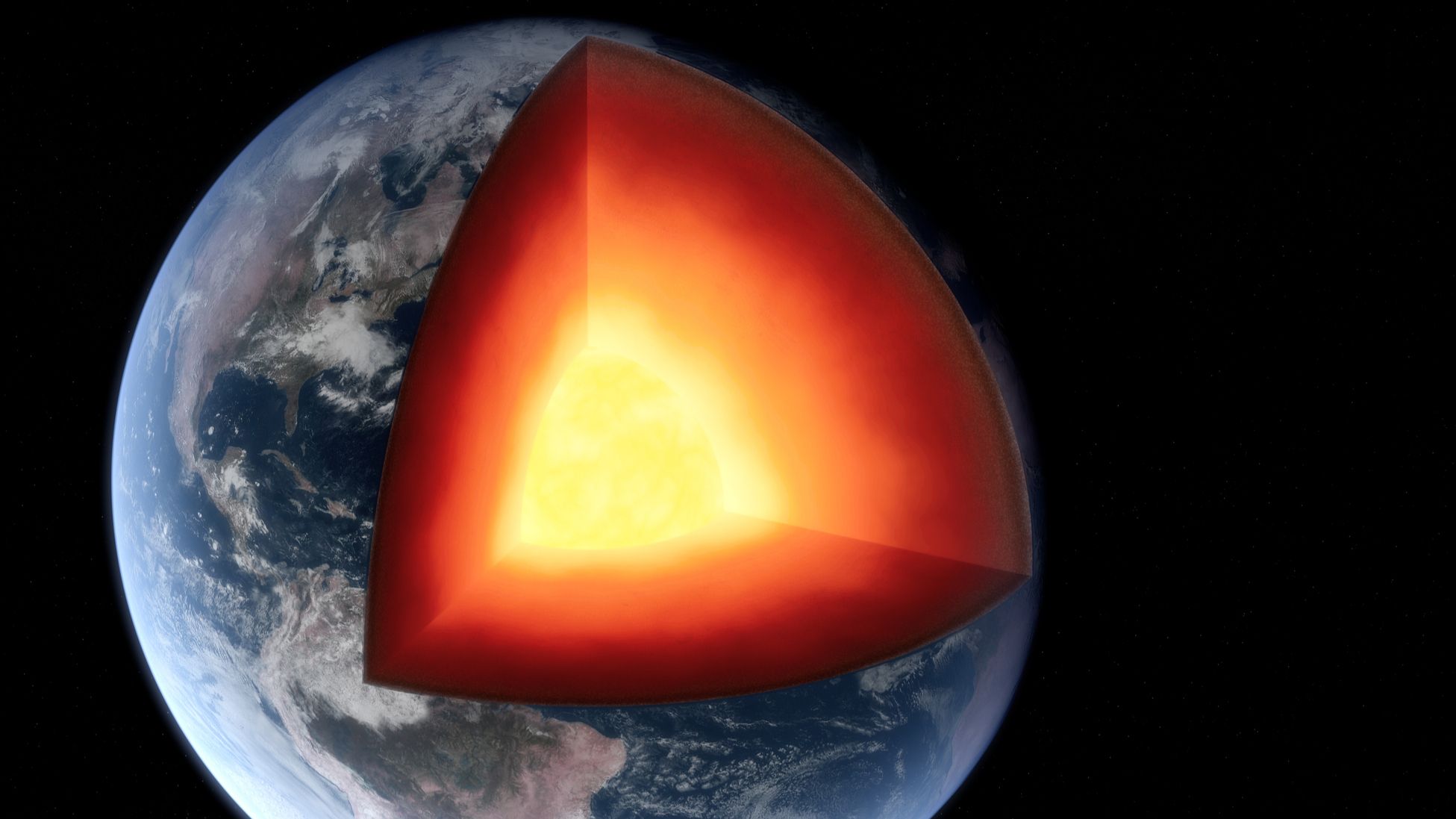The Earth’s inner core may have undergone a significant change in shape over the past 20 years, according to a new study led by Professor John Vidale of the University of Southern California. Traditionally thought to be a perfectly spherical mass, the inner core’s edges may have deformed by over 100 meters in certain areas.
The Earth’s core is essential to sustaining life, as it generates the planet’s magnetic field, shielding us from harmful solar radiation. The inner core, a solid sphere of iron and nickel, spins independently of the outer liquid core and the rest of the planet. This movement is crucial—without it, Earth’s magnetic field could weaken or disappear, potentially rendering the planet uninhabitable, much like Mars, which lost its magnetic field billions of years ago.
The research team, whose findings were published in Nature Geoscience, initially set out to investigate why the inner core appeared to slow down relative to Earth’s rotation before accelerating again in 2010. Their analysis of seismic waves—shockwaves from earthquakes traveling through the planet—revealed unexpected changes in the core’s shape.
The deformation seems to be occurring at the boundary between the inner and outer core, where intense heat and liquid flow interact with the solid structure. The extreme temperatures, along with the pull of an uneven gravitational field, may be causing the inner core to shift and distort.
To track these changes, scientists examined seismic waves from earthquakes that occurred in the same locations between 1991 and 2023. The way these waves traveled through different layers of the Earth helped paint a picture of the evolving inner core.
Professor Vidale and his team found further evidence supporting the theory that the inner core’s rotational speed fluctuated around 2010. Additionally, they identified signs that its shape was changing, likely influenced by the interaction between the solid inner core and the surrounding molten metal outer core.
While the study does not suggest an immediate impact on daily life, understanding the behavior of the inner core is crucial for predicting changes in the Earth’s magnetic field. Some scientists speculate that fluctuations in the core could be linked to magnetic field anomalies observed in recent decades.
Professor Hrvoje Tkalcic of Australian National University, who was not involved in the research, described the findings as “an intriguing concept that warrants further exploration.” He emphasized that this work could help scientists better estimate key properties of the inner core, such as its viscosity—one of the least understood aspects of modern geophysics.
Despite ongoing research, many uncertainties remain. Over time, the liquid outer core is slowly freezing into the solid inner core, but it will take billions of years for it to become completely solid. By then, however, the Sun is expected to expand and engulf the Earth, marking the end of the planet as we know it.
Scientific knowledge is constantly evolving, and researchers acknowledge that their interpretations may change with new discoveries. Professor Vidale cautioned against alarmist interpretations, emphasizing that the core is not at risk of stopping its rotation anytime soon.
“In science, we keep investigating until we truly understand,” he said. “While these findings might not affect our daily lives, they are key to unraveling the deeper mysteries of our planet.”




